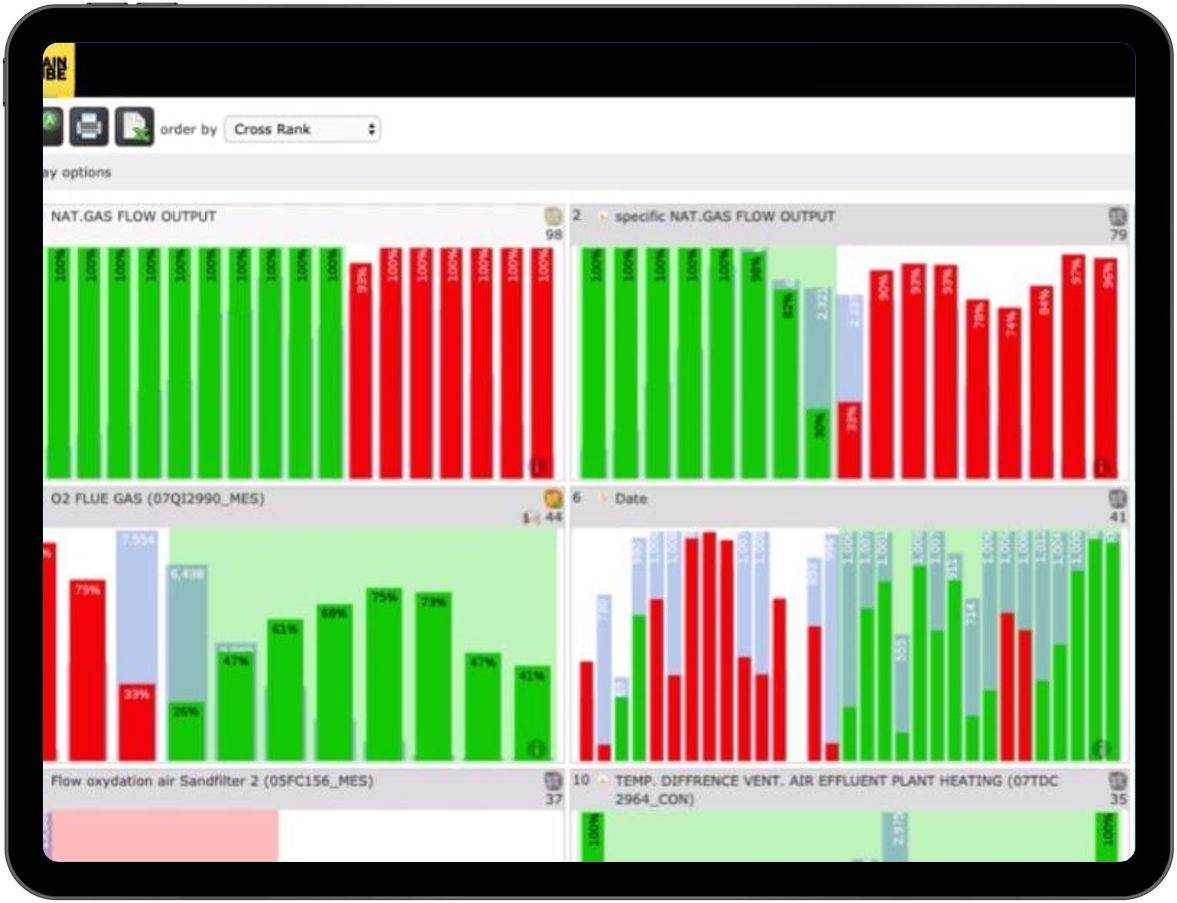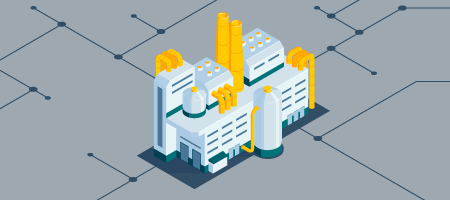Paper and packaging manufacturers continue to face unprecedented scenarios in a competitive, ever-evolving market. Digital solutions, including an Industrial Internet of Things (IIoT) Platform, can help paper and packaging companies solve their biggest challenges.
In an industry with thousands of variables in a single process, packaging manufacturers must find ways to impact their bottom line. Spending hours finding new optimizations, combing through a busy market of vendors, or relying on spur-of-the-moment decision-making is not an ideal path to come out on top.
Below, we’ve identified how IIoT helps packaging manufacturers address four common challenges to stay competitive and find continued success in this aggressive market.
Reducing unplanned downtime
Unplanned downtime is expensive for paper and packaging manufacturers. Depending on your company’s ton per hour, every minute you’re not producing can cost you thousands of dollars.
Unplanned downtime is particularly painful because it negatively impacts both revenue and cost. In addition to not actively making money because the lines stop operating, you also need to factor in unplanned equipment replacement costs—and the person who has to drop everything to fix it. There is also the very real possibility that more than one piece of equipment is ruined. For example, if a pump fails, you may end up blowing a headbox valve.
Equipment replacement is already expensive, but it can also result in damaged products: another blow to your bottom line. The trickle-down effect, both in terms of multiple equipment damages and lost products, costs you time and money.
IIoT technology can help paper and packaging manufacturers identify warning signs before they become problems. This is a powerful tool in combating unplanned downtime.
Braincube allows you to easily visualize and analyze high-frequency machine signals. This helps vibration techs understand when a machine’s vibrations are outside their normal range, indicating a possible issue.This insight helps techs know when something might go wrong before it’s too late. Providing this data directly to vibration techs saves them time by bringing the data directly to them instead of having to monitor each individual machine.
Braincube’s Alerts App can help you maximize uptime with early alerting to possible issues. For example, teams can set up a notification alert when the frequency of press roll vibrations starts increasing or decreasing. The Alerts app notifies teams via email or text, enabling maintenance teams and vibe techs to investigate the issue. Early alerting helps packaging companies maximize uptime, resulting in saved money and time.
Tracking and monitoring these insights is key for enhancing your predictive maintenance efforts in the long term. As your teams inform Braincube’s AI, it learns the outcomes of different scenarios and can provide recommendations when something starts trending towards a problem. Teams can receive AI recommendations that make it possible to stay on top of maintenance before issues arise. This helps you move from a predictive or reactive maintenance strategy into a prescriptive, optimized strategy.
Improving quality
Maintaining or improving product quality is a vital but challenging aspect of the paper and packaging industry. For example, packaging manufacturers must find a way to produce high-quality kraft paper at the lowest possible cost. If the paper doesn’t run well at a converting facility, your customers may not buy it again. Meeting or exceeding customer expectations in a competitive market means quality is of the essence.
For most paper and packaging manufacturers, the ultimate goal is to meet strength tests with the least amount of fiber and chemical inputs possible. Determining the right recipes to meet this goal is often a difficult and time-consuming long task. Much of it relies on trial and error by isolating probable causes and performing advanced analyses. With thousands of variables to consider, it can take engineering teams a significant amount of effort to slightly nudge the needle in the right direction.
Industry 4.0 technology does the heavy lifting for your engineering teams, enabling them to fully utilize their unique, intrinsic knowledge. Braincube’s Advanced Analysis App uses CrossRank, a powerful AI that analyzes all of your historical data in minutes. It also stack-ranks the most impacting variables for your objective(s), pointing teams to the right parameters to investigate in order to achieve a specific output.

In the case of packaging manufacturing, Braincube’s CrossRank AI can consider every variable from refining to chemical dosages to how the fiber is laid onto the wire. The App then provides teams with the ideal operating ranges for equipment in order to meet specific targets, such as maintaining quality. Engineering teams can verify these recommendations, define rules, alerts, and settings, then send the changes directly to the shop floor for implementation. This makes it possible to produce your best work every time, time and time again.
IIoT gives paper and packaging companies the capacity to see the impact of recipe changes digitally (before they go into production) and evaluate the output. They can make the choice as to whether or not they can implement the AI recommendations and lead to closed-loop manufacturing.
Data access and AI, all accessible digitally via IIoT, enables packaging manufacturers to be more agile and adaptable. Users have greater flexibility in substituting new raw materials, using different pulps, and developing new products to meet consumer demands. As consumers continue demanding more eco-friendly packaging products and increase their online shopping habits, packaging companies equipped with Industry 4.0 tools can better adapt to these trends and remain competitive.
Improving OEE
Overall Equipment Effectiveness (OEE) is often cited as the “gold standard for measuring manufacturing productivity.” Having a consistent pulse on how many good parts you’re manufacturing, as well as how quickly they’re coming off the line, is a key way to measure your operational health.
Despite how commonly used OEE is as a benchmark, it can be immensely time-consuming to calculate. It’s also nearly impossible to calculate in real-time given the complexity of obtaining clean, structured Edge data.
IIoT Platforms, such as Braincube, make it easier for packaging manufacturers to visualize data trends and track OEE. Braincube’s Smart IIoT Platform centralizes cleansed, structured data from Braincube’s Digital Twins into a user-friendly interface for both technical and non-technical users.
Users can build custom and interactive dashboards in the Studio App for a robust view into real-time and/or historical production data on Edge and/or from the Cloud. This gives everyone on your operations teams enhanced visibility into the metrics comprising your overall OEE (availability, performance, and quality).
Braincube’s OEE app automates calculations and makes it easy to monitor OEE in real-time, alongside other important KPIs such as OOE, TEEP, Quality, Performance, and Availability. Oftentimes, OEE is calculated post-production, making it possible to use historical data to impact future runs. But Braincube taps into streaming data, capitalizing on live information. This makes it possible to address a problem before more time, product, or equipment is wasted.

While access and visibility are crucial for improving your OEE, they may not actually help you determine how to improve OEE.
This App makes it possible to display the most likely reasons why you’re experiencing production limitations, making it easy to adapt your shopfloor strategy on the fly. The results are split into four categories: unplanned downtime, planned downtime, rate deviations, and defects. Data visualization tools, such as charts and dashboards, help point teams in the right direction to improve processes. The OEE app classifies the underlying causes for productivity loss, which saves time and effort, making it possible to incrementally improve OEE metrics as new data comes in.
Minimizing costs
IIoT is an exponential factor accelerating your key packaging goals. As you improve OEE, reduce downtime, and improve quality, the ultimate result is minimized costs. Each new win drives additional cost savings, building to collective savings that continue to skyrocket as more and more data is leveraged for process optimization.
Let’s revisit the Advanced Analysis App from Braincube. Teams can use this app to meet specific product specs while producing the product at a lower cost. This may be through identifying which suppliers lead to better product quality, how to replace fibers with chemical substitutes, or how varying moisture levels impact scrap. Using Braincube’s proprietary CrossRank AI, teams can determine how to produce a cardboard box liner that sells at a 42 lb weight but is made at the lowest possible cost, resulting in maximized revenue.
Another example of using the Advanced Analysis App to reduce overproduction comes from Oji Paper, one of Braincube’s customers. Oji produces specialty papers for a variety of different products. Their formulation inks for these specialty papers alone account for 16% of the cost of the finished product.
The Oji team used Braincube’s Advanced Analysis App to analyze the amount of chemical coating used in producing specialty paper. This revealed two-thirds of their paper batches surpassed the compliance coating amount, creating an unjustified and preventable cost. Their goal was to limit the amount of coating applied to a given product while ensuring the finished product’s quality remained unchanged.
Using Braincube, the Oji team analyzed the production conditions of the compliant products so they could consistently repeat their best conditions. Out of the 2,450 variables involved in the process, Braincube’s CrossRank AI uncovered a combination of four parameters that made it possible to stay within the coating target.
These parameter combinations became a systemized rule that operators could follow up on using their Braincube Live interface. Even in the very first days, these changes showed a 5% reduction in chemical consumption, resulting in significant cost savings without impacting quality. You can learn more about their success in the full case study.
Summary
The paper and packaging industry has always been competitive, but the stakes are higher than ever before. Luckily, there are technological solutions that can help packaging companies address their biggest challenges and find continued success, all while exceeding the demands of changing consumers.
Improving OEE means greater efficiency and better overall output, streamlining resource use while optimizing products and processes. Reducing downtime (especially unplanned downtime) saves money and makes it possible to maintain the necessary output to meet customer demands. High-quality packaging materials result in less tearing, fewer faulty semi-produced products, and less wasted product. Minimizing these collective costs all impact the bottom line, making it possible to produce more at a lower overall cost.
IIoT helps packaging manufacturers achieve these tangible goals—and more—while also empowering individuals with the tools to make continuous improvements.

